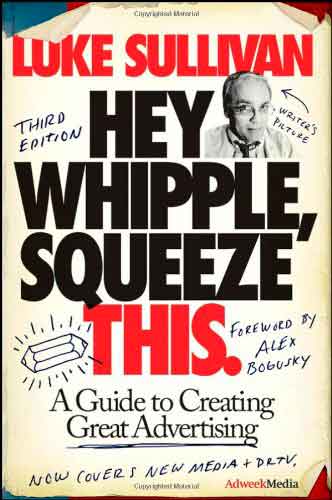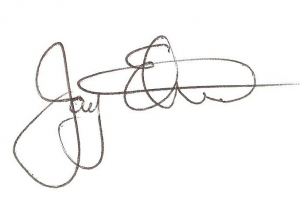Topic: Creativity and Advertising

Podcast Episode #80 of the internet show about small business marketing
If you want to make your cash register ring with advertising, what do you do? Get creative. But just what is creativity and how do you use it to create great advertising? In this episode of Power to the Small Business, author, advertising expert, and ad agency creative director Luke Sullivan tells us how we can create great advertising.
Host: Jay Ehret – Chief Officer of Awesomeness at TheMarketingSpot.com
Guest: Luke Sullivan – Creative Director at GSD&M and author of Hey Whipple, Squeeze This
Length: 29 minutes
Podcast: Play in new window | Download

To receive new episodes by email, use the link below and enter your email address. (We keep these private and don’t give or sell them to anyone)
Subscribe to Power to the Small Business Podcast by Email
— SHOW NOTES AND LINKS —
What is Great Advertising?
The convergence of advertising that is fun, exciting and interesting, with advertising that makes the cash register ring.
Luke Sullivan’s Creative Process:
- Fully understand the business, what it does, what it wants to accomplish, who it targets, who the competition is.
- Figure out what the business has, that people want, that the competition isn’t giving them.
- Sit down with a pad of paper and a pencil. Face a blank wall. Don’t look at beautiful settings, instead turn yourself inward.
- Then draw a little square on a blank sheet of paper. Fill it with something interesting.
- The objective is to take everything about the business and burn it down into a single idea that is interesting. It might be a visual, and idea, a movement.
- If you can’t get your idea into that little square, it’s not a big idea.
Selected Advertising Quotes from Luke Sullivan:
On the necessity of creativity in advertising:
“It is not required. But that means all the weight goes on to your product… When you don’t have a great or breakthrough product, then maybe you are going to need to align some marketing in your favor. Then, I think creativity is the best business tool you have to unfairly beat the competition.”
“Creativity needs to be in service of a commercial purpose. If it’s just creativity for creativity’s sake, well then it’s just art.”
On creating great advertising:
“You need to figure out the one thing; the one thing that you can tell your best customer that will get them to lean in and talk about your product.”
SHOW LINKS
Luke Sullivan’s Blog: www.HeyWhipple.com
Buy Luke’s Book: Hey Whipple, Squeeze This
Get updates on: The Marketing Spot Group Coaching
To receive new episodes by email, enter your email address. (We keep these private and do not give or sell them to anyone else)
 Interested in the new show? Please subscribe in your feed reader or ITunes at http://MarketingPlanPodcast.com/subscribe
Interested in the new show? Please subscribe in your feed reader or ITunes at http://MarketingPlanPodcast.com/subscribe Thanks for listening!
Thanks for listening!





